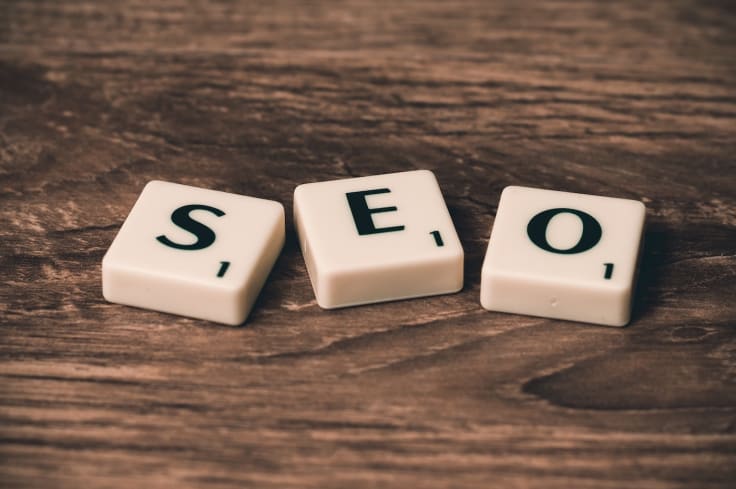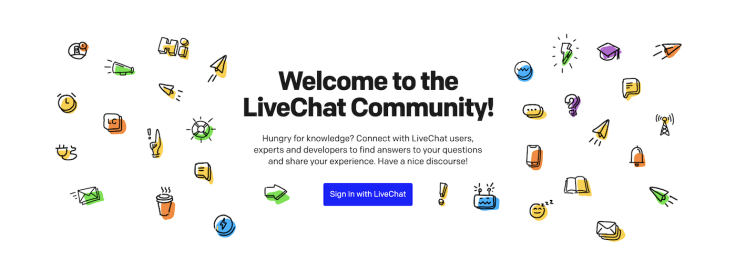Showing top 0 results 0 results found
Showing top 0 results 0 results found

Unless you’re in the middle of nowhere, there are probably a number of different products around you. Whether it’s a chair you’re sitting on, a computer you’re using for work, or a favorite mug sitting on your desk. What’s the first thing that jumps into your mind when you think about those items? I think about the brands behind them.
It doesn’t matter if you sell a physical product, service, or software. All of them are associated with brands that carefully created them for you to think about in very specific ways. Those brands are the reasons why you choose one product over another.
The way brands communicate with people has been continually changing over the last decade or so. One of the reasons for this is that brands started embracing the concept of community building.
Things to keep in mind before you build a community
Regardless of what your objectives are, building a community is a strategic process that involves a fair bit of planning that will guide you in achieving your goals.
While we’re at it, remember that we build communities for people, and your business benefiting from it is just a nice addition. This brings us to the community engagement cycle, an interesting concept introduced by CMX, a home for community professionals. It consists of four stages you should keep in mind while building your community:
- Identity
- Trust
- Participation
- Reward
This means that a community member’s identity aligns with the identity of the community. He trusts the community and its members, actively participates in it, and feels rewarded for being a part of that community. If members meet all the criteria, you’re on your way to managing an engaged and healthy community.
An endless debate
After you’ve set up the goals for your community, you should think about one, highly important aspect before you put your plan into action: using SEO.

There are two ways to go about it. If you want your community to help improve the ranking of your main domain, you should use a subfolder. For example, yourwebsite.com/community. With this structure, the keywords your community ranks with will strengthen the SEO of your main domain.
Alternatively, you could put your community into a subdomain. For instance, community.yourwebsite.com. However, I think it’s a good idea only if you want it to rank separately, outside of your main domain.
Outsourced or in-house? That’s the question
Both scenarios described above tie in with the following question: should you host a community on your domain, or use a third-party tool for it? Let me explain the differences.
There are quite a few third-party tools available for you to build communities externally e.g., Tribe, Mobilize, Discourse, or Mighty Networks. However, a majority of them create communities for their clients in subdomains. If your community contributing to the SEO of your main domain is not a priority, go for one of them. Discourse, for instance, can custom-build a community in a subfolder for you, but that requires a lot of additional work from them on the back end.
You might as well try with a Facebook or LinkedIn group, Twitter chat around a chosen hashtag, or a Slack community. If you choose one of these options, make sure you think about how it aligns with the long-term strategy of your community. You never know when one of those platforms will erase your community out of the blue, and you don’t want all your effort to go up in smoke in the blink of an eye.
Hosting a community on your domain is pretty self-explanatory, especially considering the SEO dispute mentioned above. Once you decide to build your community in-house, you have to do all the hard work of building it from scratch on your own or adjusting a WordPress plugin to meet your needs.
Engage, engage, engage
Now that we have the initial planning and setting up of your community out of the way, it’s time for the fun part. Let the people in, and start engaging them.
Think about how to divide your community into different categories, and what would be the best ways to engage your members. Each sub-category will have different kinds of discussions that are typical for them. There’s also space for you to create routines, such as weekly or monthly AMAs (Ask Me Anything) posts. So, one week, you could invite a community member specializing in a given area to answer questions and give back to the community with his expertise. Then, in the following week, a different specialist, and so on.
It’s also a good practice to create a chit chat/watercooler kind of space where the community members can just hop in to talk about their favorite TV shows or share pictures of their pets. It obviously has nothing to do with the business goal of your community, but it provides your members with the human touch and a sense of belonging.
What’s in it for you (or your brand, to be precise)?
While you work hard with your sleeves rolled up, you’ll start noticing how your business benefits from building a community. As Community Strategist at Buffer, Arielle Tannenbaum says:
“Building a community around a brand is the best way to build deeper relationships with your customers. These deeper relationships help you learn more about their needs (so you can design for these needs in your product/service), create positive experiences for them to learn and grow, and help them feel more connected to your brand.
By facilitating connections between your customers, you are involved in growing their networks and being a key part of their story. Being part of an engaged, supportive community is a powerful thing for anyone, and if you can create that for your customers, that's incredibly meaningful!”
A branded community is a source of endless, mutual opportunities for brands and people creating those communities. I’ve been a member of the Buffer community for years. If there’s a blueprint for a successful community, it’s theirs with Arielle at the wheel.
Collecting customer feedback
I might be wrong, but I assume a majority of your community members will be people who already use your product or service, at least in the beginning. I can’t imagine a better way of collecting customer feedback than simply tuning in to what the people in the community have to say. They will share their pain points, suggestions, or feature requests in one place. In fact, it’s one of the most common use cases of our community at LiveChat.

If they don’t do this on their own, you can always spark discussions by asking questions yourself. They are in the community because they want to be there. That’s why it’s easier to get such priceless information from inside the community instead of an email survey.
Your community can act as your customer support
I reached out to a community building expert and Head of Community of Quora in Polish, Gloria Ziencina-Kawula on what she thinks the key benefits of building a community around a brand are:
“Your community could be a group of loyal customers who will support the brand, who will let you know if something about your product or service could be better — the group of your customers who will likely test new features and share their feedback. The feeling of being listened to, being part of the team, is very important for your customers and lets you build a group of engaged brand advocates, and position you as a supporter.
Building a community of customers around the product lets you also be closer to them in real-time, to know their needs better, educate them, and through this increase their time spent in a product, improve retention, and lifetime value. The same way you can reduce the costs of educational campaigns, customer service, research, gaining feedback, or even advertisement.”
I couldn’t agree more with the message Gloria sends. Chances are, some of the community members know your product or service almost as well as if they worked for you. Think of them as additional support agents that take a little bit of weight from your dedicated agents’ shoulders.
Many community members won’t have to come to your live chat or ping you on social media because they will get advice on how to solve their problems from fellow community members.
There’s no better place to build up your brand advocates
Apart from customer feedback, Gloria also mentioned brand advocacy that’s intertwined with brand loyalty and brand evangelists. You want your brand to get bigger and bigger, and that’s impossible without those highly dedicated people.
Ever seen a line of people waiting outside an Apple store? It’s probably going to be challenging to reach that level of commitment. Some people would even call it overkill, but you get the gist.
Still, if you constantly provide value to your community, evangelists will grow organically over time because they’ll want to give back to the community. This can take the form of bringing in new community members or simply advocating for your brand outside the community.
You can encourage your people to spread the word about the brand. One way to do this is by introducing gamification into your community, with the most active members gaining upgrades on their current plans of your product, for example.
Let the community shape your brand
Listening to what your community has to say is essential. Some of their ideas can be life-changing and will help you reinvigorate your product or service. Recently, I found out LEGO was close to going bankrupt at the beginning of the ‘00s. As technology developed, people were bombarded with more and more new forms of entertainment, which made it difficult for LEGO to keep up with.
Like any other wise brand, they had to change something in the way they communicate with their audience. As a consequence, LEGO launched its Ideas platform in 2008. Ever since, all their fans can submitLEGO set ideas that are later voted on by other community members. The most popular sets are then reviewed by LEGO employees who decide which ideas will officially hit the shelves.
As of now, we know that the user base of the Ideas platform has reached more than 1 million users. Over 26,000 ideas for LEGO sets have been submitted so far, and 28 of them were eventually produced. In case you’re wondering, a playable LEGO piano was one of them.
Building a community is a long term process, but it’s well worth it
You have to remember that building a thriving community takes a lot of time and dedication. It’s not going to blow up with engagement by itself, so try not to get discouraged. It’s going to take longer than a month or two to produce the desired results.
The days of communication between a brand and consumers being a one-way street are long gone. That’s a great thing. Communities already play a big part in shaping many of the brands we know, and their influence is only going to get bigger and bigger.
No matter what industry you’re in, the competition is as fierce as ever. At the end of the day, it’s your community that could be a key differentiator between you and your business rivals.
Get a glimpse into the future of business communication with digital natives.
Get the FREE report







Comments